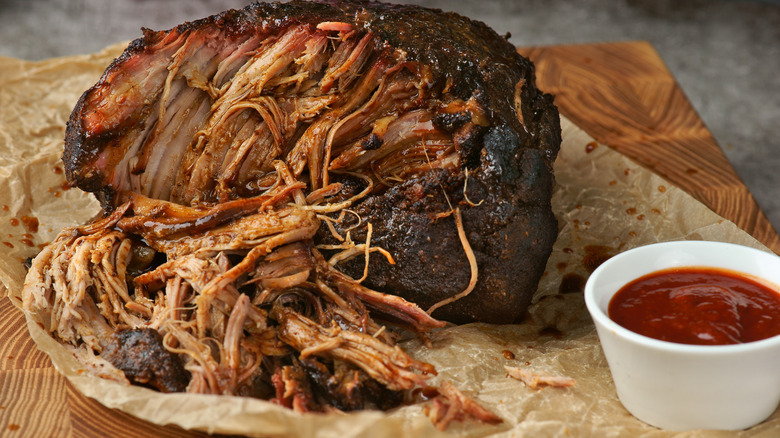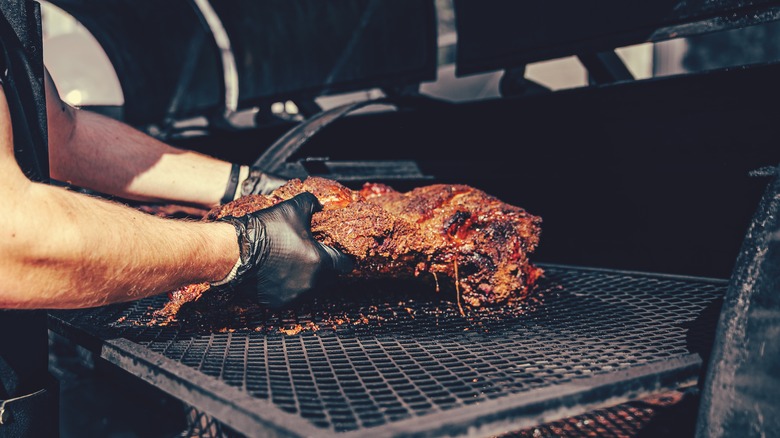The Biggest Prep Mistake You're Making With Pulled Pork
Ah, pulled pork: One of the most appealing of the pantheon of smoked meats. Marbled with connective tissue and seams of fat that melt and coat the tender muscle fibers, pork shoulder is a giving and forgiving cut of meat. As far as smoked meats go, it's a great on-ramp to the wider world of smoking as pulled pork is fairly simple to master. But, there are still numerous, easily-remedied mistakes that can be made when readying the meat. Chief among them is putting meat in the smoker straight from the fridge.
Pulled pork is well within anyone's reach. Pork shoulders are readily available and just need a quick seasoning rub and a rest in the fridge for a day or two to really soak in the flavor. However, before you plop the shoulder on the heat, you need to go a step further and remove it from the fridge a few hours before you plan to start smoking. This allows the meat to reach ambient temperature, shortening the overall smoking time, avoiding burnt edges, and leading to a more consistent final product.
From there, get a smoker or grill set for indirect cooking at a nice medium-low temperature of 250 to 350 F. Make sure there is a pan of water to catch drippings and add moisture to the cooking process, place your pork shoulder over it, and close the door or drop on the lid. Pretty much all that's left is to monitor the temperature.
Why temperature matters
As with nearly all forms of cooking, smoking heats food from the outside in. That means the exterior is exposed to the heating process for far longer than the interior. That's great for barbecue, where "bark" is a big part of the bite. However, Juicy pulled pork has to be cooked through to an internal temperature between 165 and 200 F for the proper texture to be achieved.
When you put a cold piece of meat on a smoker, grill, or even in the oven, the heat that should begin cooking the food is first spent raising it up to a temperature where the cooking process can begin. That means the exterior languishes in the swelter, while the inside is just getting started. That would spell a longer cook time for your pulled pork — and the cook time is already relatively lengthy. This can also lead to a crust that is more burnt than burnished.
Luckily, this couldn't be an easier problem to avoid. Just be cognizant of when you want to start smoking the pork shoulder and remove it from the fridge a few hours before. While you prep other menu items and start the smoker, the pork will naturally reach a thermal equilibrium. When it gets into the smoker, it will still cook outside-in, but at a much more even pace thanks to the forethought of an easy head start.

